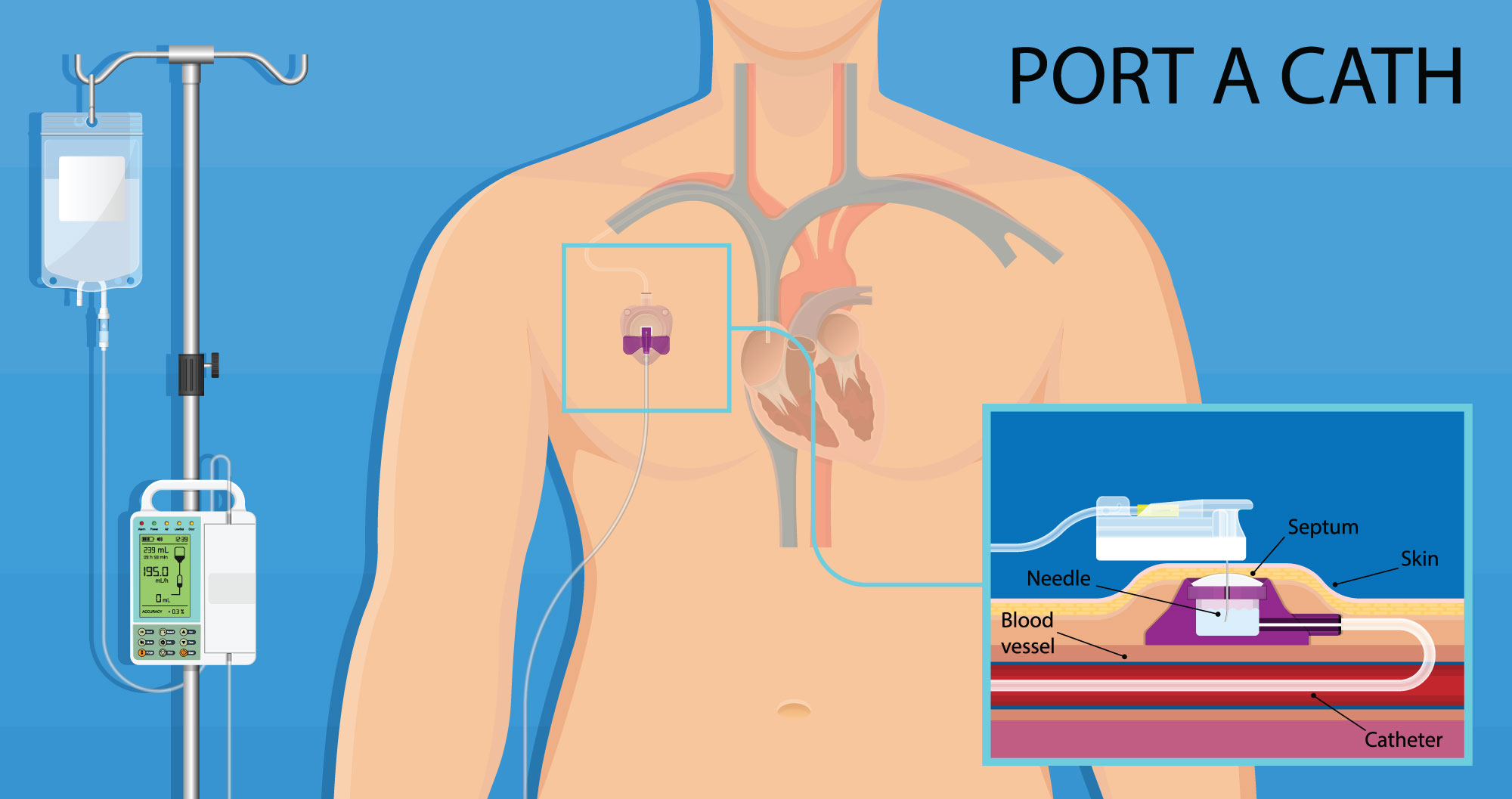Implanted Venous Access Device (Port)
What is an implanted venous access device (port)?
A port, sometimes called a Port-a-Cath, is an implanted venous access device. This device gives access to your veins and is placed in your body during a procedure. A port is a central line that gives medicine and fluid into your veins. A port makes it easier to get IV medications or to have blood taken. It works like an IV but can stay in place for 5 years or more.
A port is made up of a reservoir (an area that holds fluid) attached to a tube (catheter). The reservoir is placed under your skin, and the tube goes into a vein. The reservoir will look like a bump under your skin. It is round and about the size of a quarter. You usually cannot see the tube. If you are having chemotherapy over a few months or more, your provider may suggest that you get a port.
How is a port used?
Often, your port can be used right away. You may need to get an X-ray first to make sure the port is in the correct place. To use your port, a nurse will first "access" the port. This is done by putting a needle through your skin and into the reservoir. Putting the needle in is a sterile (very clean) procedure.
- A numbing medication may be used before putting the needle in. Ask your provider if you will be given this numbing medication to put on before your appointments.
- The nurse putting in the needle will feel for the reservoir.
- The nurse will put on sterile gloves and clean the area.
- When the area is dry, the needle is put through your skin and into the reservoir.
- The needle is left in place, and the area is covered with a dressing.
- The needle is connected to a lumen (clear tube) with a cap at the end. This will be used to give medications, fluids, chemotherapy, blood products, or to draw blood.
- Once your infusion is done or your labs have been drawn, your nurse will remove the dressing and the needle. A Band-Aid may be used to cover the site where the needle was removed.
How do I care for my port?
- Follow your provider’s directions for how you should care for your port after the surgery. This may include not lifting anything heavy for a while. Call your provider if you have any signs of infection, such as fever, redness, swelling, pain, discharge (drainage), or warmth.
- Wash your hands and put on clean gloves before handling any tubing attached to the port. After handling the tube, remove your gloves and wash your hands again.
- While a needle is in your port, be careful not to pull on the tubing. This will keep the needle from coming out. If the dressing becomes dirty or wet, it should be changed right away.
- A port should be flushed before and after use. Flushing means using a syringe to put saline solution (medical saltwater) or heparin (fluid to prevent a clot in the line) into the port.
- If your port is not being used, it should be flushed with saline once a month. If you no longer need your port, it can be removed.
- Look at your port site each day. Even after the area has healed from surgery, check for signs of infection.
When should I call my provider?
Call your provider if you have any signs of infection at your port site, like:
- Redness.
- Swelling.
- Pain.
- Discharge (drainage).
- Warmth.
- A fever. Your provider will tell you at what temperature to call them.
You want to make sure that the reservoir is secure under your skin and not moving (a little wiggle back and forth is okay). If any part of your port or line disconnects, call your provider right away.
If a flush or fluid given into the port does not flow freely or if the skin around the port is swelling, stop the infusion and call your provider. Contact your provider if you see changes in the area around the port or if the reservoir is moving loosely around underneath your skin.
